Self seeding plants are an ideal way to create a landscape filled with flowers and food without spending a lot of money. These are plants that you can plant just one of and watch as they return and/or multiply year after year without any assistance from you.
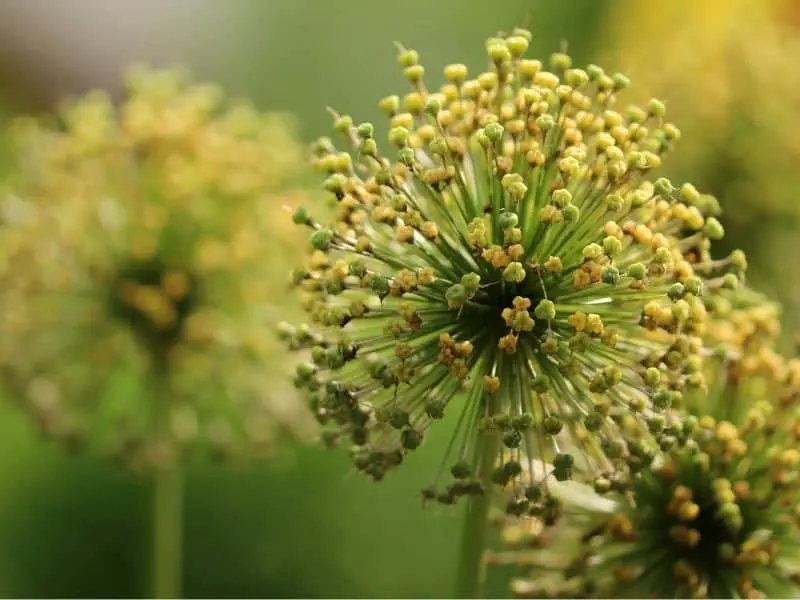
Self Seeding Plants For A No Cost Garden
Planting a garden that self seeds is an excellent return on your money and time. If you can obtain seeds or plant cuttings from a relative or friend, then you won’t have any money invested in a self-seeding garden. Check out these plants that produce food or flowers and will self-seed and continue to produce for years to come.
30,000 Seeds, Wildflower Mixture  Bulk Mix of 24 Different Varieties of Non-GMO Wildflower Seeds
Bulk Mix of 24 Different Varieties of Non-GMO Wildflower Seeds  All Perennial Wildflower Heirloom Seed Mix
All Perennial Wildflower Heirloom Seed Mix
Vegetables that self-seed make for an inexpensive way to maximize our crops. Just be aware of a couple of things.
- some seeds (hybrids) will not grow true to the parent plant. This means that hybrid squash or tomato seedlings will likely taste nothing like the fruit from the original plant.
- they can cross-pollinate, which might leave you with an odd-looking squash that looks like a combination between winter squash and zucchini.
Self-seeding flowers
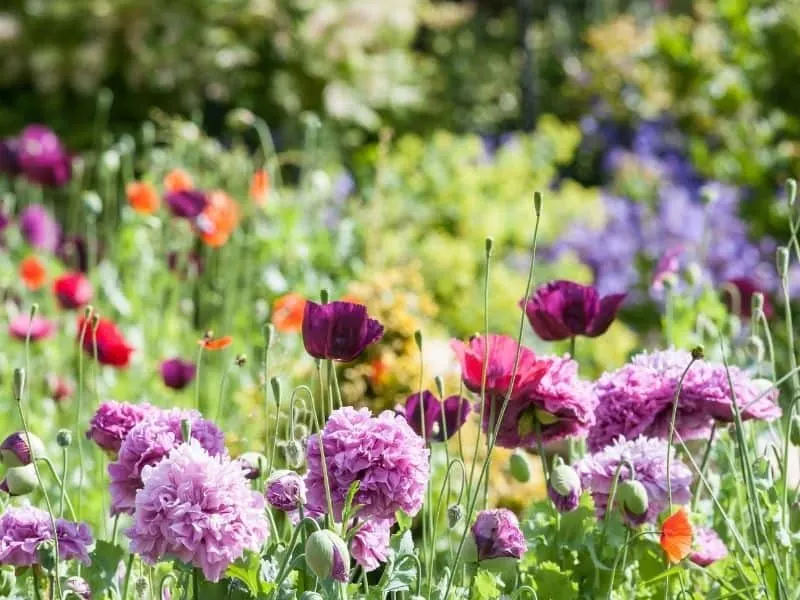
These self-seeding flowers are ideal for a cottage garden, meadow, or any landscape area that you don’t want to mow. Allow the flowers to bloom and reproduce naturally to help prevent soil erosion, improve soil structure, and provide food and shelter for wildlife.
Blue flax (Linum lewisii)
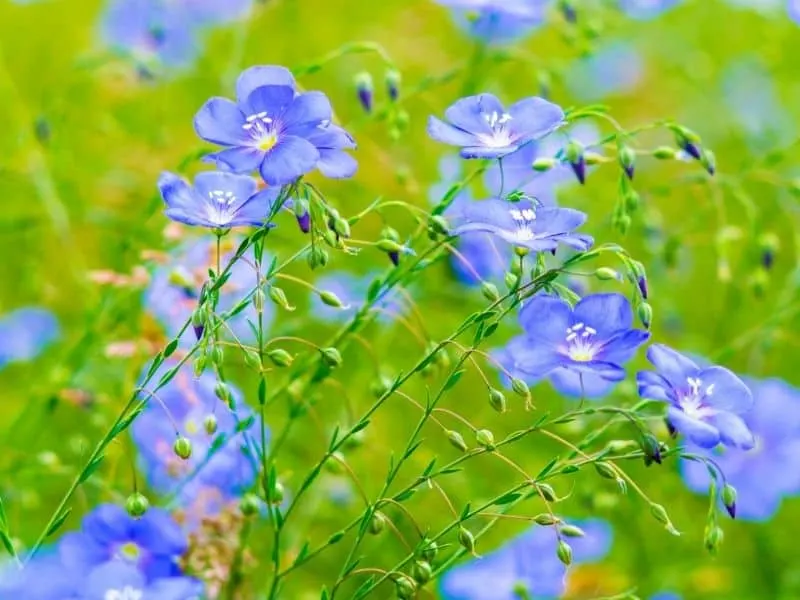
Blue flax is a blue-blooming perennial plant that produces a small blue flower for just one day. A grouping of blue flax will produce blooms all season and will self-seed after blooming. Blue flax grows best when planted in full sun and dry soil conditions. Want some in your garden? Get some seeds here.
Cosmos (Cosmos bipinnatus)
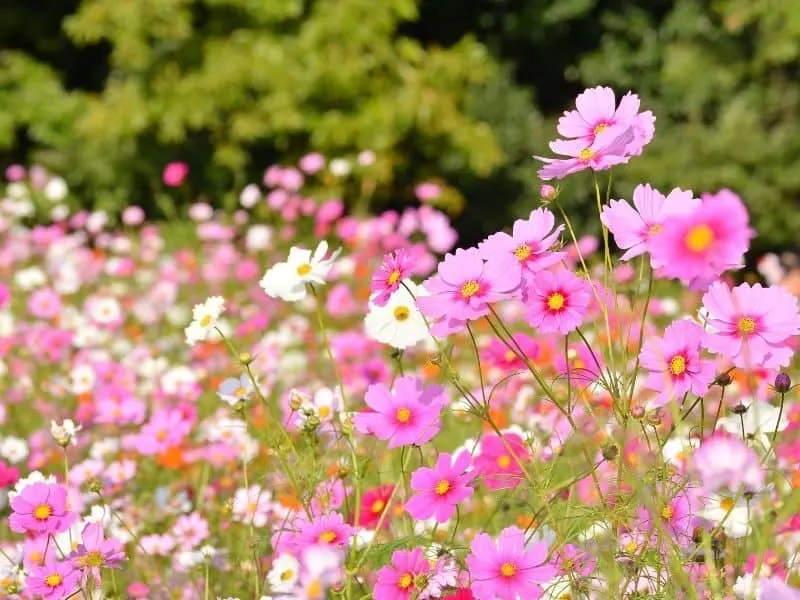
Cosmos flowers are fragrant, colorful, and grow up to 3-feet tall. Cosmos is both an herbaceous perennial and an annual flower. This self-seeding flower will produce pine-needle like seeds that will germinate anywhere they come into contact with soil. Cosmos grows best in full sun and dry soil.
Larkspur (Delphinium)
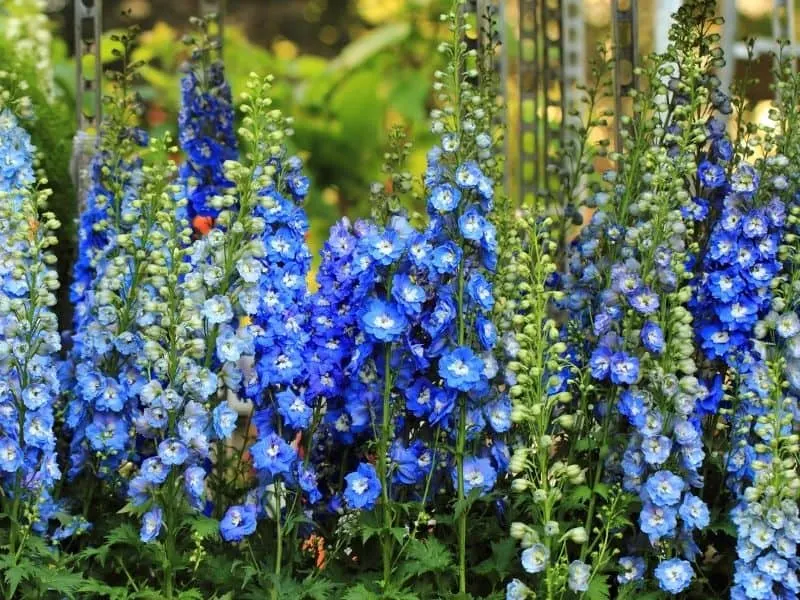
Delphiniums produce purple spikes of flowers on tall, self-seeding plants. The larkspur does self-seed proficiently and will take over an area if not kept in check with regular plant removal.
Attention! Larkspur is toxic to humans and pets.
Morning glory (Ipomoea)
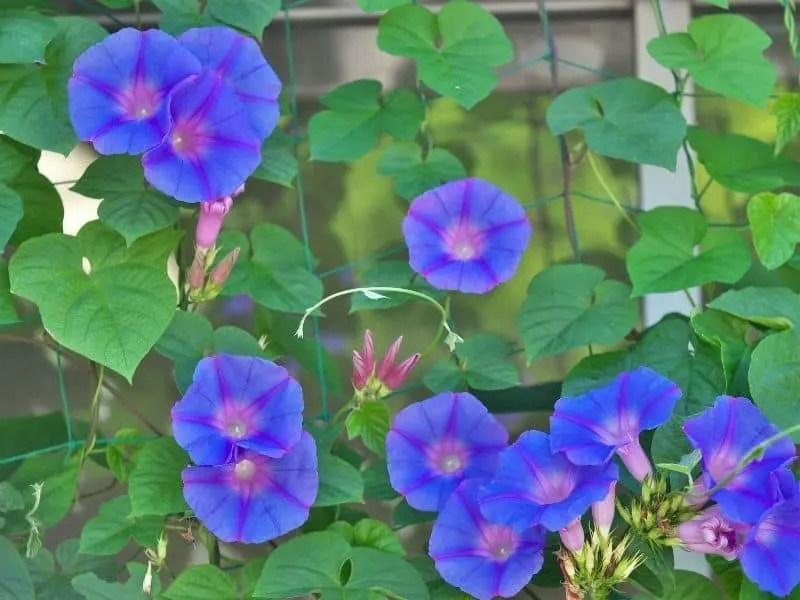
The morning glory vine produces tendrils that easily attach to any nearby vertical surface. It gets its name from the fact that it produces new flowers each morning. The vine is adaptable to most soil conditions, including poor soil in which nothing else will grow. Allow the flower seeds to dry on the vine and fall to the ground for self-seeding.
Just be careful, as this can become invasive in certain areas.
Sweet alyssum (Lobularia maritima)
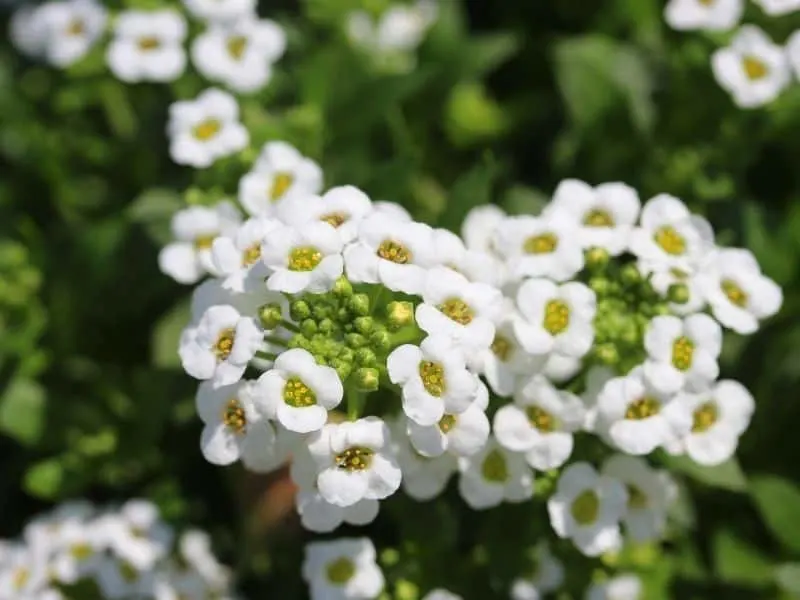
Low-growing, fragrant, self-seeding, sweet alyssum is an annual plant that makes a perfect living mulch for taller plants.
Plant sweet alyssum between garden paver cracks or under tall flowers and vegetables. The plant will self-seed, grows well in sun or partial shade, and prefers low water conditions.
Violas (Viola tricolor var. hortensis)
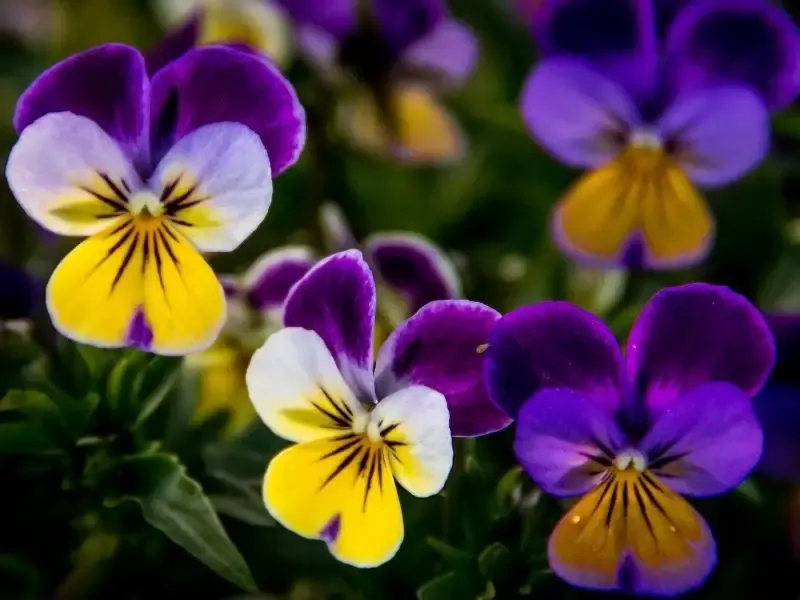
Also known as pansies and johnny-jump-ups, violas are a low growing, self-seeding, cool-season flower. The tri-colored blooms stand out when planted in large groupings. Ideal self-seeding flower to use for edging or between pavers.
Both the flowers and stems of the viola are edible. They are a good source of vitamins A and C, and the plant is often used to add flavor to honey, syrup, and custard. The flavor is mild, sometimes tangy, and the flowers and greens make a nice addition to fresh salads.
Self-Seeding Vegetables
Self-seeding vegetables are an integral part of a permaculture garden or food forest. Plant the seeds once and allow the vegetables to produce and reproduce through their own self-seeding nature. If seeds germinate in an undesired location, just gently remove them from the soil and transplant them where you want them or share seedling with a neighbor.
Vegetables that self-seed make for an inexpensive way to maximize crop production. However, you should start with non-GMO heirloom seeds for the best results. Seeds from a hybrid plant will not grow true to the parent plant. This means that hybrid squash or tomato seedlings will likely taste nothing like the fruits from the original plant. Plus, a hybrid can cross-pollinate, which might create an unusual looking combination vegetable.
Alliums
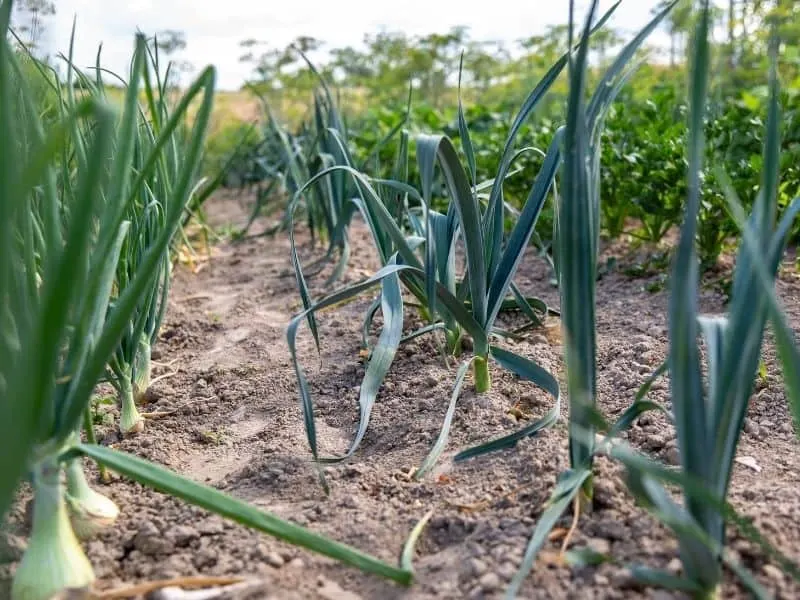
Vegetables in the allium family, like onions, leeks, and scallions are biennials self-seeders. These will overwinter nicely in the garden soil and in spring will develop flowers and produce seeds. You can either collect the seeds or allow the plants to re-sow where they are.
Beets
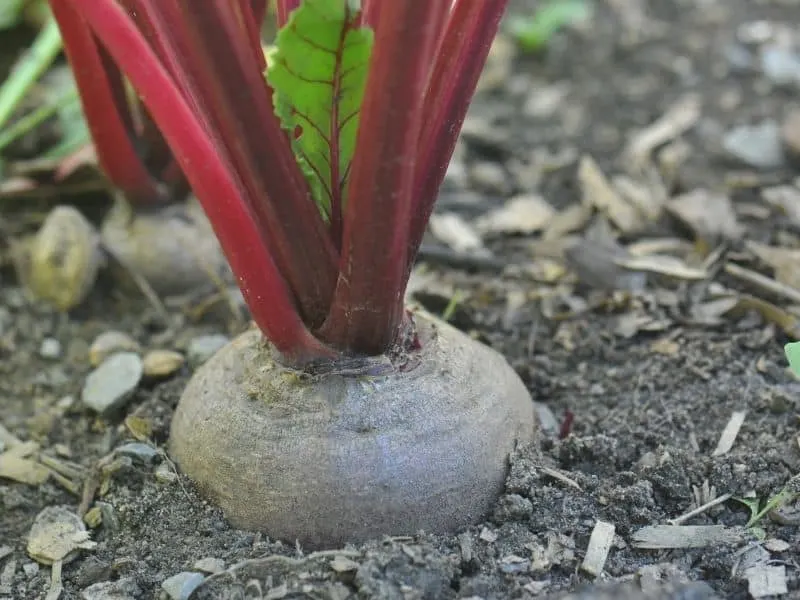
A sweet underground-growing bulb packed with vitamins, minerals, and antioxidants. The above-ground growing greens are tasty and packed with nutrition as well. Allowing beets to self-seed provides a gardener with two vegetables growing in one space.
Carrots
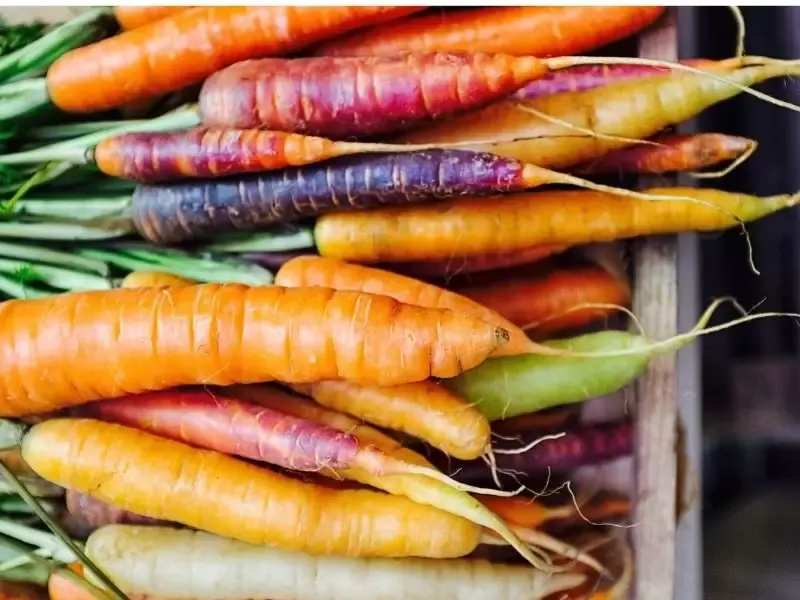
Carrots will re-seed themselves but it can take up to 3-weeks before the seeds germinate. When allowing carrots to self-seed use a marker in the general area so you won’t plant something on top of the slow germinating carrot seeds.
Cucumbers

Cucumbers allowed to remain on the vine after they reach their prime will continue to grow until they reach about 1-foot long and 6-inches around. They will eventually turn yellow and burst open when the seeds inside are ripe.
Under the right environmental conditions, the multitude of seeds deposited into the soil will germinate the following spring and create more cucumber plants than you’ll know what to do with.
Zucchini and squash
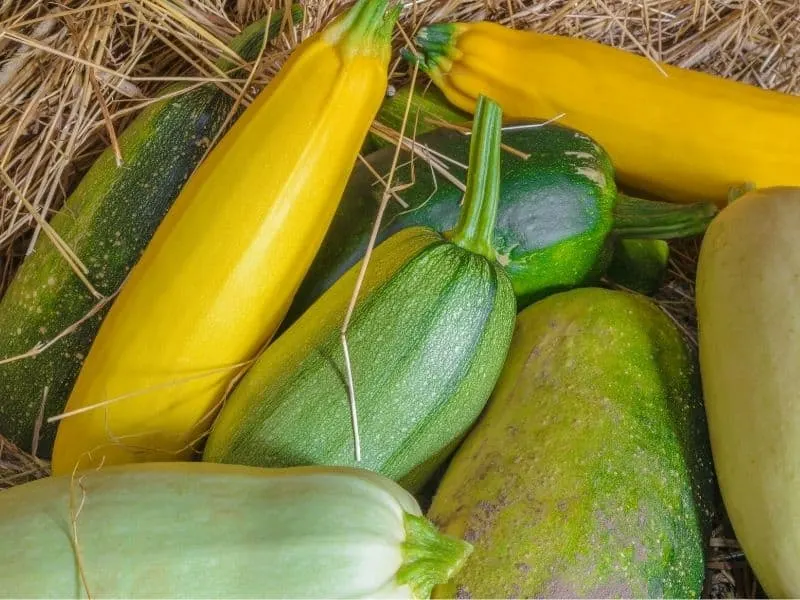
Squash (yellow or zucchini) will do the same thing as cucumbers if they are allowed to remain on the plant.
If you have too many zucchinis, check out these 5 ways to freeze zucchini.
Brassicas
Kale, mustard, cabbage, broccoli, cauliflower, and all other vegetables in the brassica oleracea family are cool-season vegetables and will bolt (stop growing and produce seeds) as soon as the weather turns warm.
Potatoes
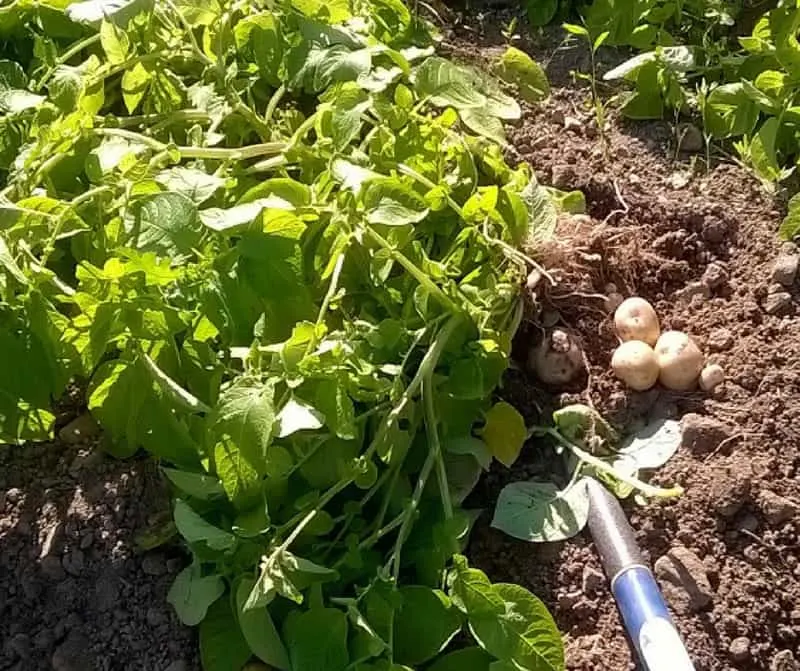
Potatoes left in the soil at harvest time will sprout and develop a new plant. When harvesting potatoes, leave some of the smallest tubers in the soil so they will re-grow into a new plan and produce more potatoes.
Beans
Beans will re-seed and develop a new bush or vine in the same season if a few bean pods are left on the plant to reach maturity and dry out. The dry pods will burst open and drop the dried beans (which are the seeds) onto the soil. Peas will do the same thing.
Radishes
Radishes left in the soil will develop seed pods that will dry and burst open to deposit seeds into the soil. One seed will grow into one radish. The seed pods are edible and have a milder radish flavor. The long seed pods are often used to make pickles.
Self-Seeding Herbs
Herbs are so easy to grow and provide so much beauty to the garden and flavor to food. These happy little plants will self-seed and provide years of enjoyment.
Sweet basil
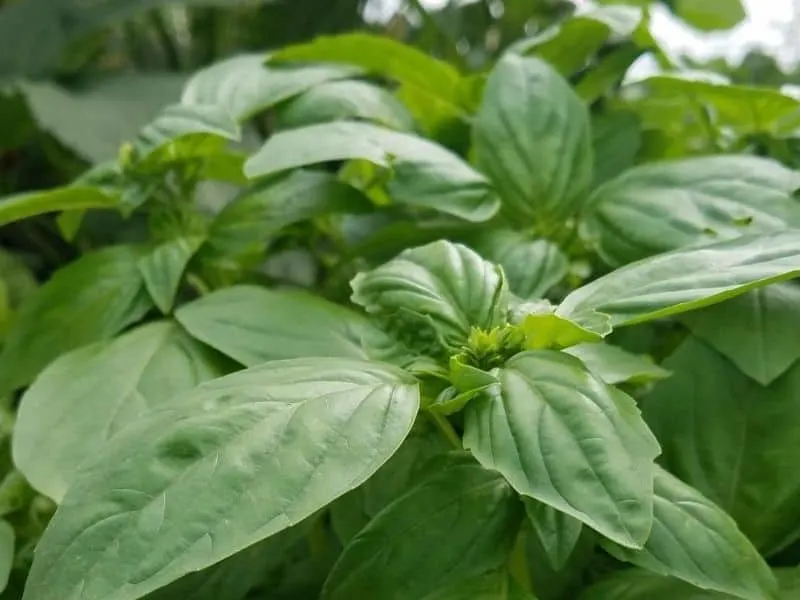
Basil is a fast-growing annual herb that’s a member of the mint family. It releases fragrance when touched and produces tiny white flowers filled with seeds when the plant is mature. This herb makes an ideal companion plant for several garden vegetables, plus basil is easy to dry and store.
Cilantro
Cilantro provides two different foods produced by one plant – flavorful cilantro leaves plus edible seeds called coriander. The plant leaves and seeds have entirely different flavors and culinary applications.
Cilantro is an annual flowering herb that is a member of the parsley family. Harvest some of the seeds to eat and allow some seeds to remain on the plant so it can re-seed itself.
Calendula
Calendula is an annual herb plant that is beautiful, edible, and medicinal. Calendula is low-growing and that will reach a mature height of 18-inches and produce large, edible orange flowers. The flowers are large, 4-inches across, and have a peppery taste and make a colorful addition to a green summer salad. Allow some flowers to remain on the plant for re-seeding.
Calendula oil has antifungal, antiseptic, anti-inflammatory, and antibacterial properties that make it useful in healing wounds, soothing eczema, promoting healing for minor skin irritations, treating acne, and relieving diaper rash.
Chives
Chives are the milder-flavored cousin of onions. The mild oniony flavor pairs well with potatoes, fish, eggs, soups, and sauces. The slender green tops are often used as a garnish also.
Chives are easy to grow indoors so you can have them available year-round. Allow some of the slender stalks to grow and form seed heads on top so this herb can self-seed.
Clary sage
Clary sage is an herb that thrives in the dry, shady area of a low water garden. This herb will start as a small foliage rosette the first year after being self-seeded, then the following years, the herb will produce purple flower spikes.
Dill
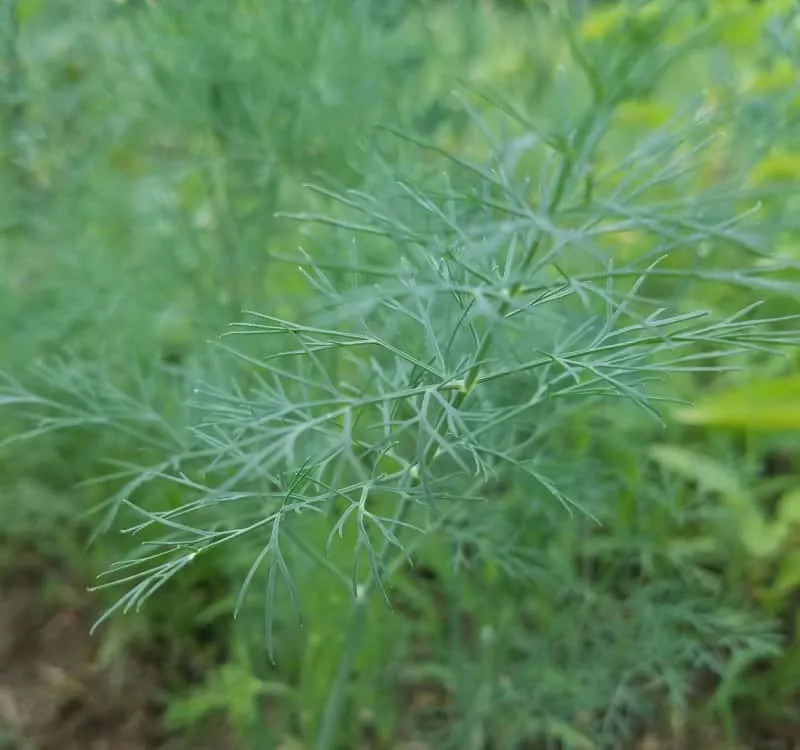
Dill is a “two-for” herb plant because it provides two different food items from one plant. Fresh or dried dill leaves are considered and used as herbs, while the dill seeds are considered and used as a spice. Allow some of the seeds to remain on the plant to mature and fall to the ground for re-seeding.
Learn how to grow dill here.
Horseradish
Horseradish is a hardy perennial in the mustard family. It grows best in cold climates and will grow throughout the winter in mild climates. This herb will produce flowers with seeds but most of the seeds are not viable and won’t germinate. If you only want a couple of horseradish plants then allowing it to self-seed will be sufficient. To develop a large patch of horseradish you can propagate the plant via root cuttings.
Feverfew
Feverfew is a white flowering, a scented herb that has several medicinal uses when harvested. Plant feverfew in a low water area around outdoor eating areas to help keep insects away. Plant in-between paver cracks or around the outdoor kitchen perimeter so the herb will be stepped on and release its insect-repelling scent.
Parsley
Parsley seeds are found in the flowers the plant produces when it’s mature. To control the growth of this herb remove flower heads before they dry out.
Self-Seeding Trees
- American elm tree seeds are green and the size of a quarter. They develop before the tree develops leaves in the early spring. The numerous green, leafy seeds make the American elm tree look like it has already leafed-out. The seeds reach maturity at the end of the tree’s flowering cycle and fall to the ground.
- Ash tree seeds are dry, oar-shaped winged seeds that are blown off the tree and distributed by the wind. The seed pods grow in clusters and hang on the tree until late fall when the wind will blow them away.
- Black locust trees will grow in harsh environments where other trees won’t grow. Black locust trees produce fragrant white flowers in late spring and are followed by 5-inch long purplish-brown seed pods. The seed pods will drop to the ground, dry out and open to release 6-8 seeds inside.
- Maple trees also develop winged seeds that are distributed by the wind in spring. The winged seeds are often referred to as helicopters, whirligigs, whirlers, or twisters but the correct name for them (and all other winged-type tree seeds) is samaras.
- Oak trees develop acorns that feed wildlife and produce new oak trees. The acorns start as small, green growths at the end of the oak limbs. Squirrels and other wildlife eat them almost as fast as they develop. But some acorns will be overlooked by wildlife and grow into mature, brown acorns and fall from the tree to the ground below. These brown acorns are still very desirable food for wildlife, so the few ripe acorns that remain on the ground will germinate and develop a new oak tree.
- Japanese barberry will self-seed in warm climates but will not produce seeds in cold climates. So depending on where the tree is growing determines if the Japanese barberry will re-seed itself.
Self-Seeding Perennials
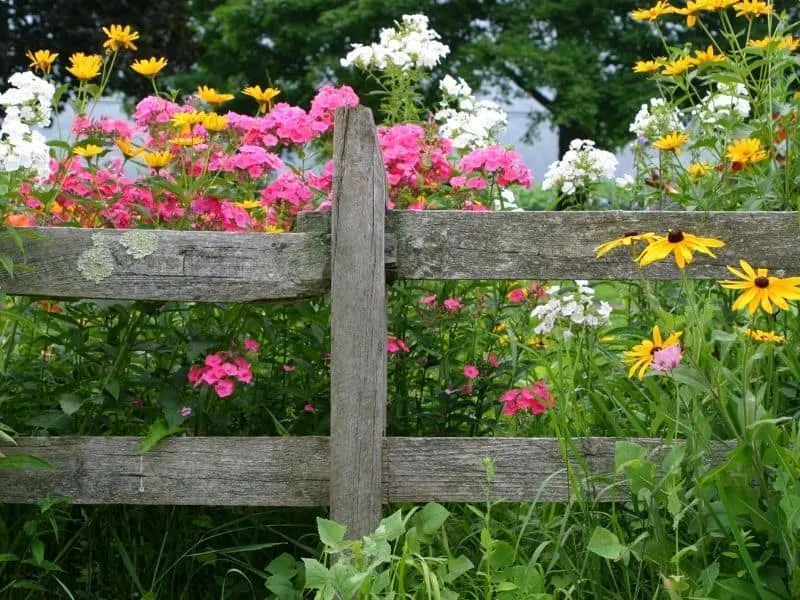
Perennial plants will keep a landscape colorful and a garden producing food throughout most of the year with very little help from you. Theses plants will grow, develop, and release seeds so the growing cycle will continue indefinitely.
- Bellflowers have bell-shaped flowers in white, purple, or pink. These perennial flowers thrive in full sun and evenly moist soil.
- Blazing Star is an easy-care perennial that is native to marshland, prairies, and open meadows. As a bonus, Blazing Star’s tall spikes of purple, white, or pink blooms attract hummingbirds and butterflies.
- Bleeding Heart is a delicate-looking perennial plant that produces heart-shaped blooms that appear to have a drop of blood on the tip. Bleeding Heart plant goes dormant in mid-summer and the dying foliage can be camouflaged by planting tall perennials in front of it.
- Columbine will self-seed rapidly to fill in an open landscape space. Columbine will also cross-pollinate and create a blend of bloom colors that vary from the original parent-plant colors.
- Lenten Rose is an evergreen, shady-loving self-seeding perennial plant that thrives in hot or cold weather. Bugs won’t touch, deer won’t eat it and blooms in the middle of winter. Each lenten rose will reach a mature height of 12-inches and will live 2-3 years.
- Monkshood produces a true blue flower and the plant will adapt to living in almost any environment. Seeds can take up to a year to germinate. All parts of monkshood are poisonous if ingested or even if the sap comes in contact with any mucous membrane. Wear gloves when handling it.
Self-Seeding Annuals
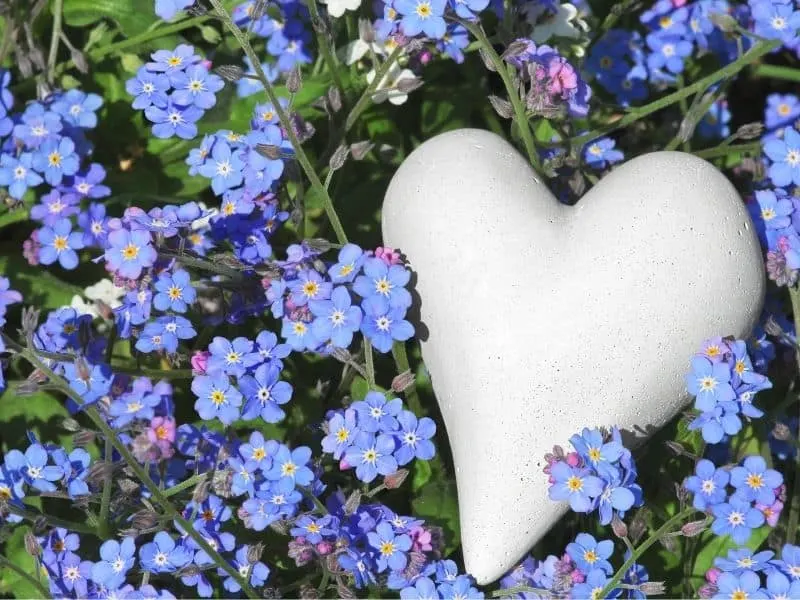
Many annuals are self-seeding and will return year after year just like perennial plants. Try some of these self-seeding annuals in your garden.
- Sweet Alyssum grows into a low-growing mat of green foliage that is topped with tiny white blooms that have a sweet, vanilla-like scent. This low-growing annual is ideal for planting in borders or to grow in a container.
- Coreopsis comes in both annual and perennial varieties, several different bloom colors, petal and leaf formations. Because of its varied appearance, coreopsis is also known as butter daisy and tickseed. Coreopsis attracts butterflies and produces seeds that look like ticks that attract birds.
- Cosmos is a member of the daisy family and it thrives in a variety of soil and environment conditions. This plant is low-maintenance and self-seeds rapidly, making it an ideal flower for difficult landscapes.
- Candytuft is a cool-season annual that bloom in spring. Candytuft is a low-growing plant that produces blooms in white, pink, purple, and magenta.
- Forget-Me-Not is a blue-blooming annual that is an aggressive self-seeder that may need some plant editing in small spaces. This is an easy-care plant that thrives in most environments.
As you can see, there are many self seeding plants you can enjoy in your garden. Make an initial plan as to where to plant these, and you’ll have years of enjoyment without much planting work.
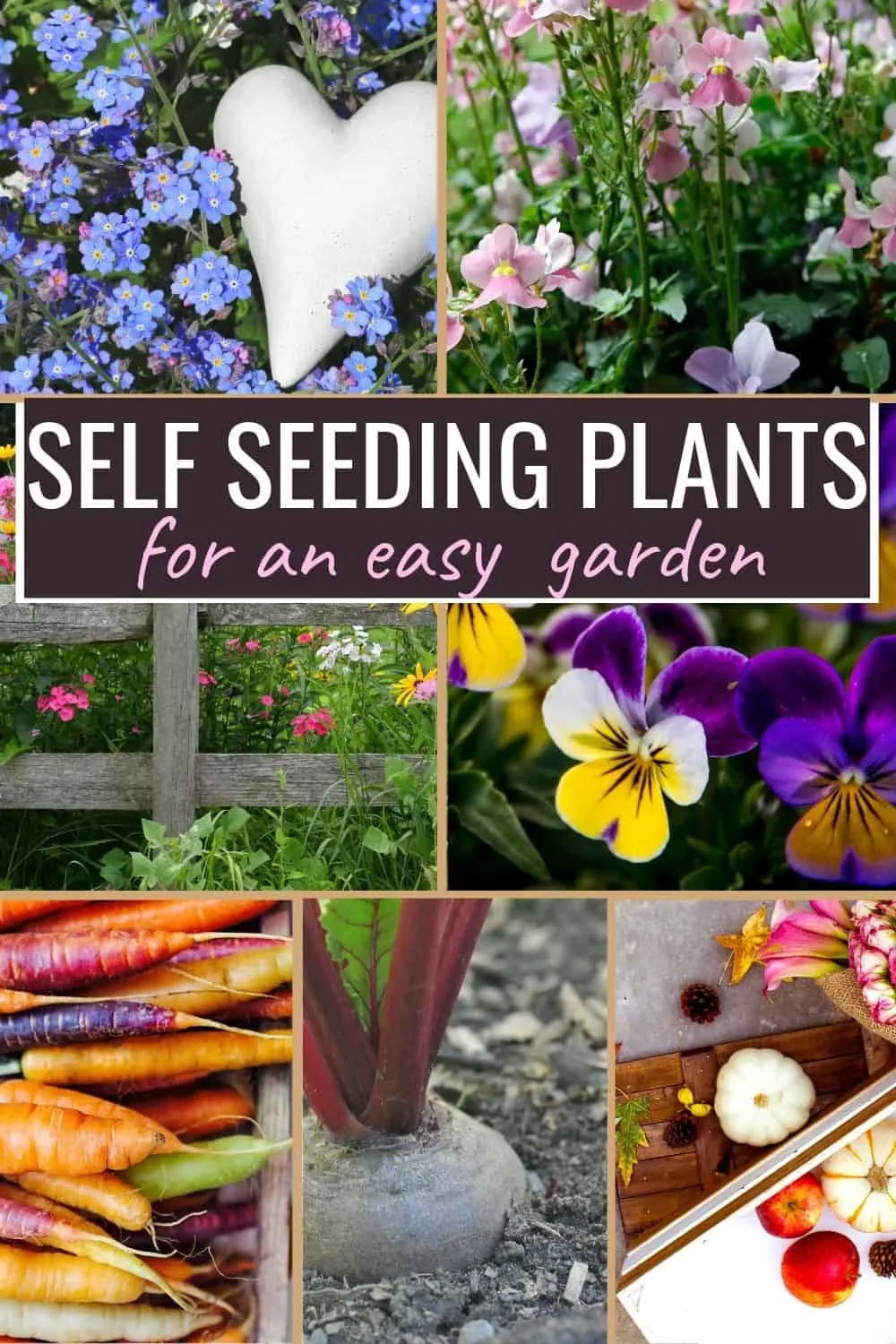
Adriana Copaceanu is a passionate nature lover living in the country on her dream property where she grows vegetables, lavender, and wildflowers that she shares with the wildlife they attract. When she's not in the garden, she loves spending time with her chickens and planning her next nature project. Check out her books below:
How to Grow Lavender for Fun and Profit: Lessons Learned from Planting Three Hundred Lavender Plants




Landscaping Under Fir Trees: 4 Easy Tips And A Long List Of Plants!
Monday 10th of April 2023
[…] perennials or self-sowing annuals to avoid digging under the fir tree every year and thus disturbing the roots […]
16 Lovely Flowers That Start With L
Monday 10th of April 2023
[…] self-seeding plants work well in informal settings such as cottage gardens, and the seed pods add interest to dried […]
7 Stunning Blue Shade Perennials
Wednesday 29th of March 2023
[…] are self-seeding and can spread quickly, so be sure to plant them where you want them to […]
Best Rock Garden Plants For An Eye Catching Design
Friday 27th of January 2023
[…] great plant for full sun rock gardens, columbine is a low-lying, self-seeding plant that will spread through your entire rock garden to give you a gorgeous bed of soft green foliage […]
9 Stunning Companion Plants For Dianthus
Friday 17th of June 2022
[…] William can be either a short–lived perennial or a biennial. It typically spreads by self-seeding and may pop up in new areas of the flowerbed each year. It ranges in height from 7 inches to 24 […]